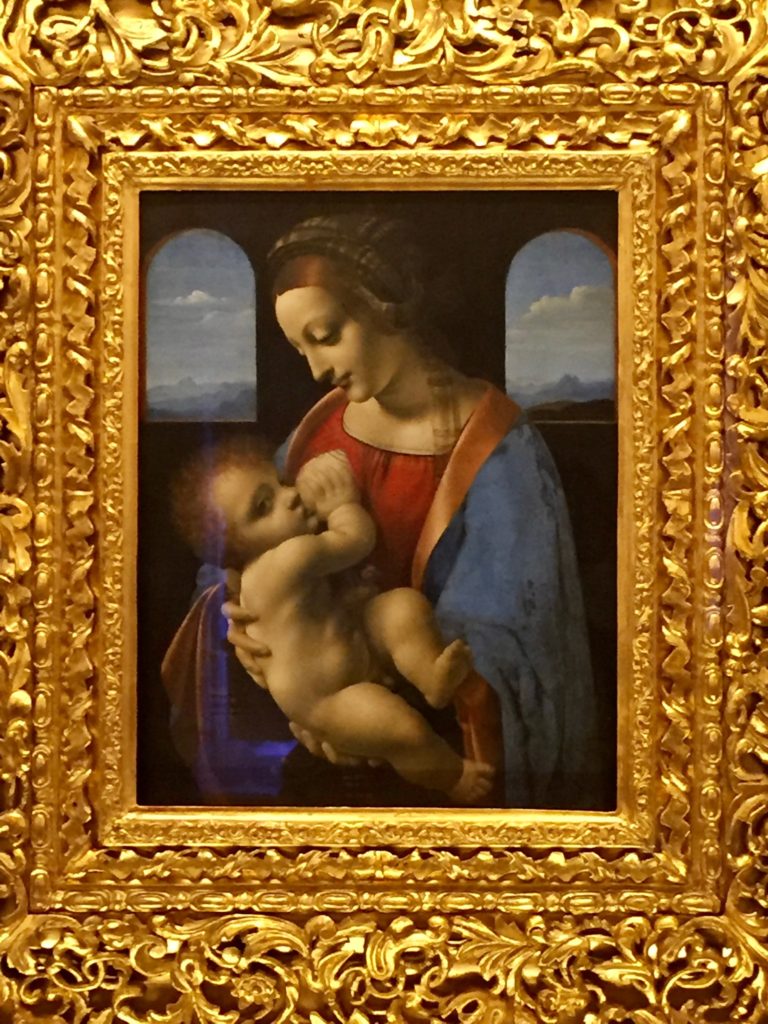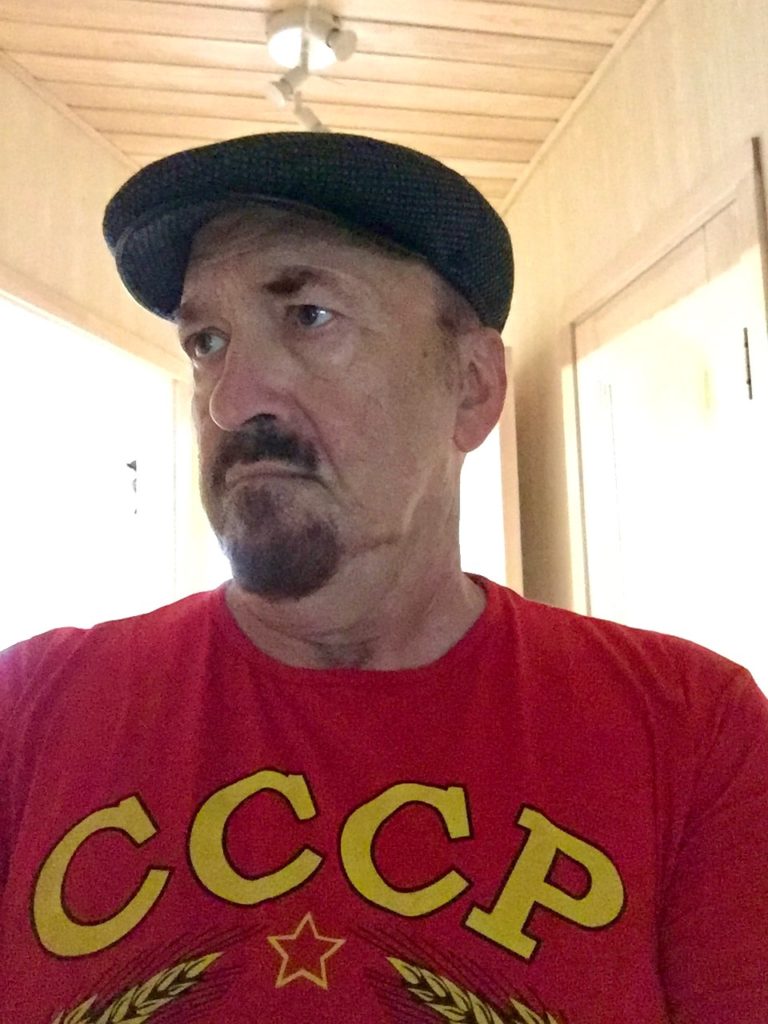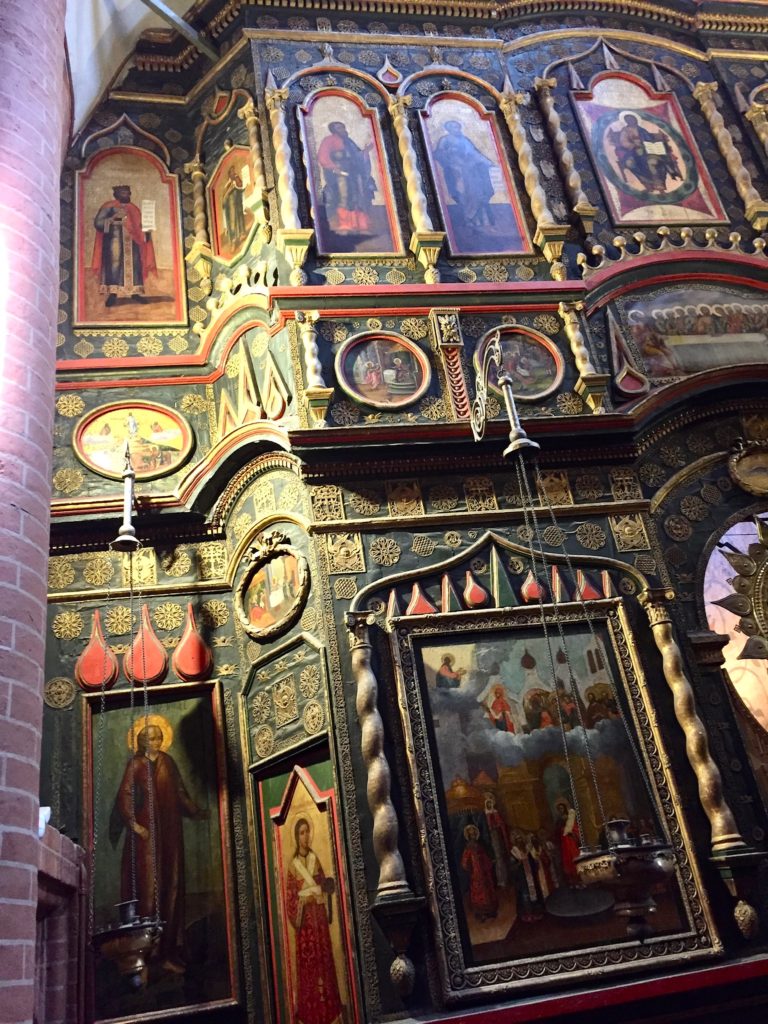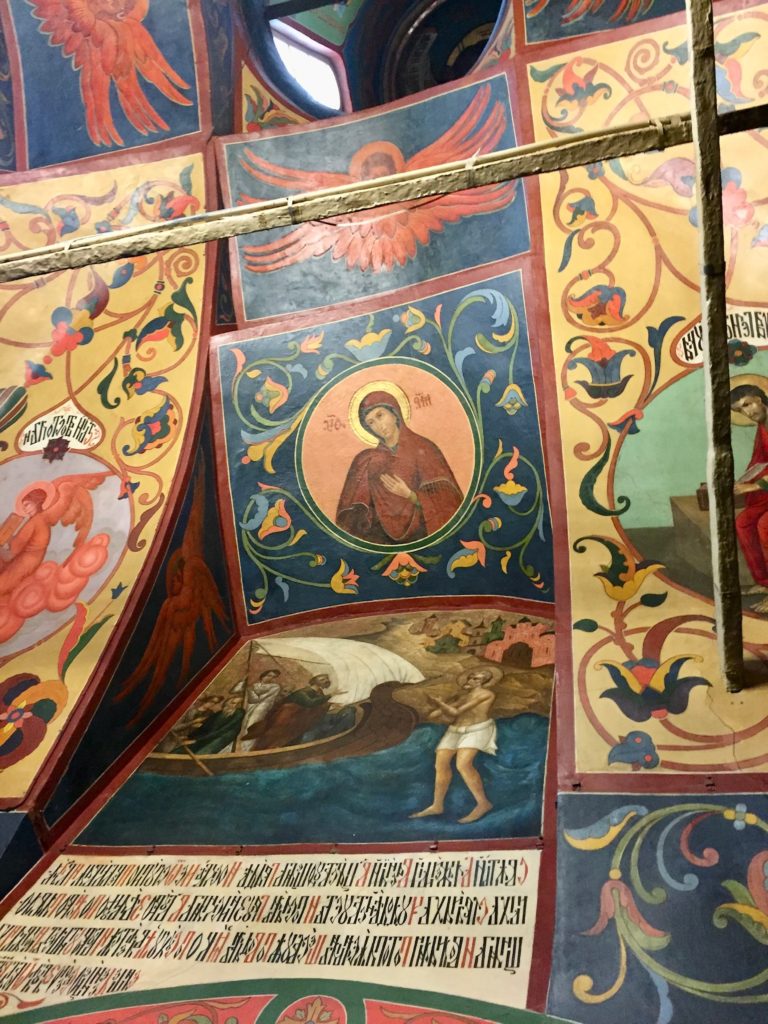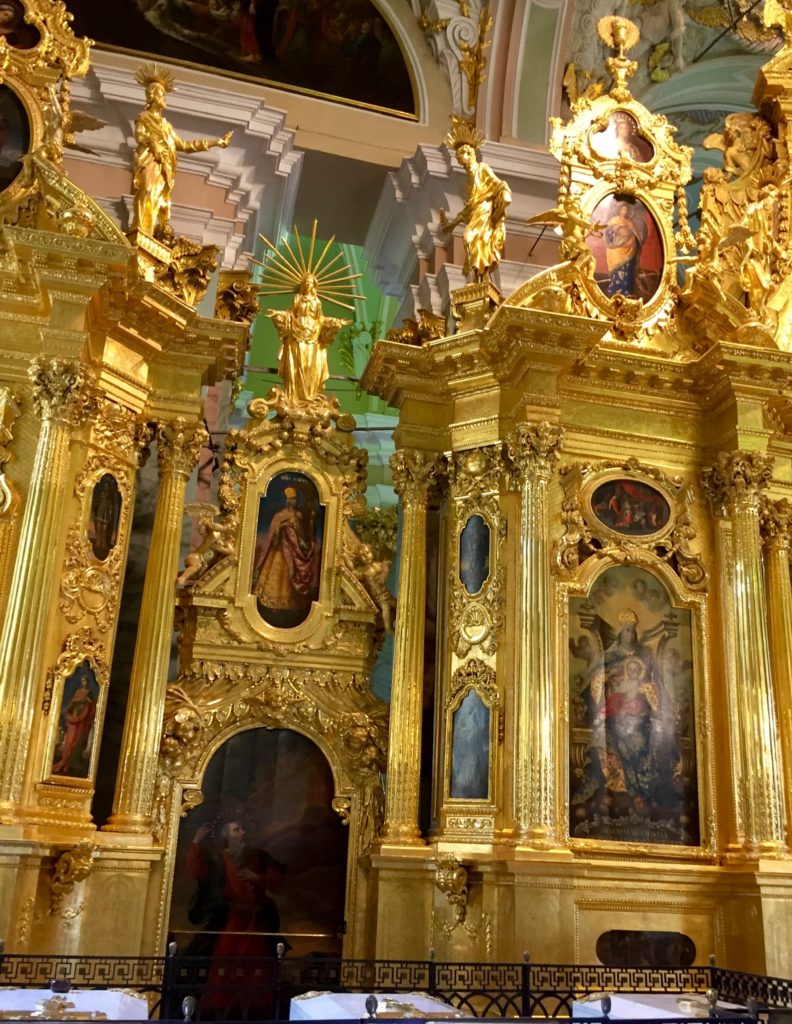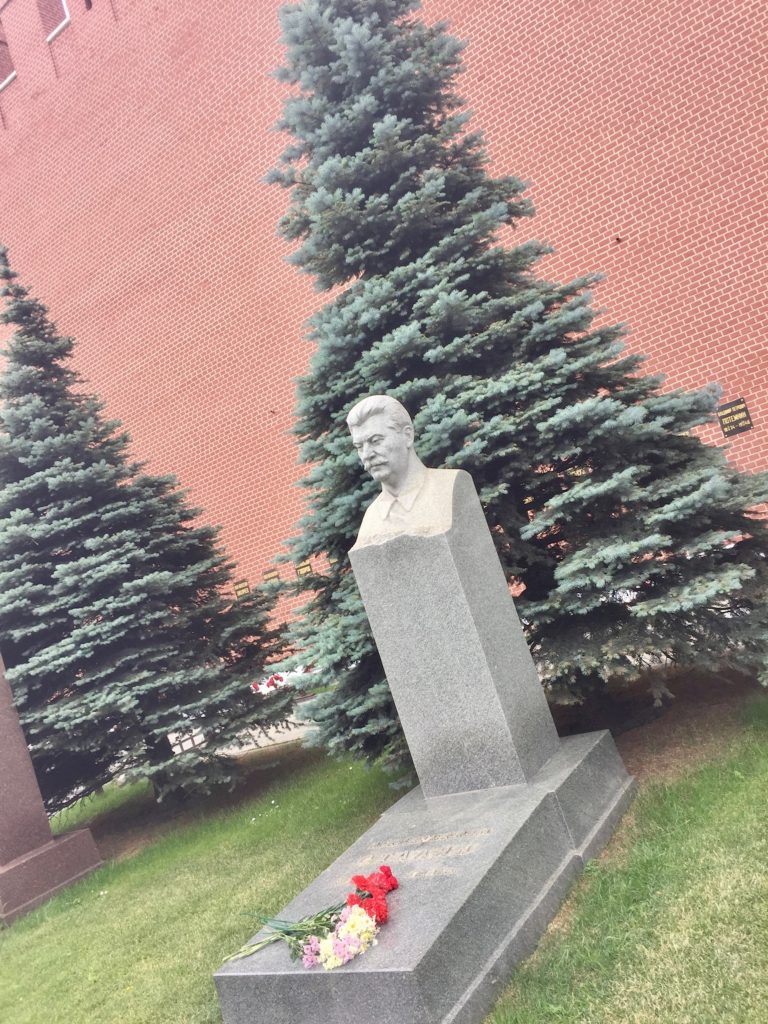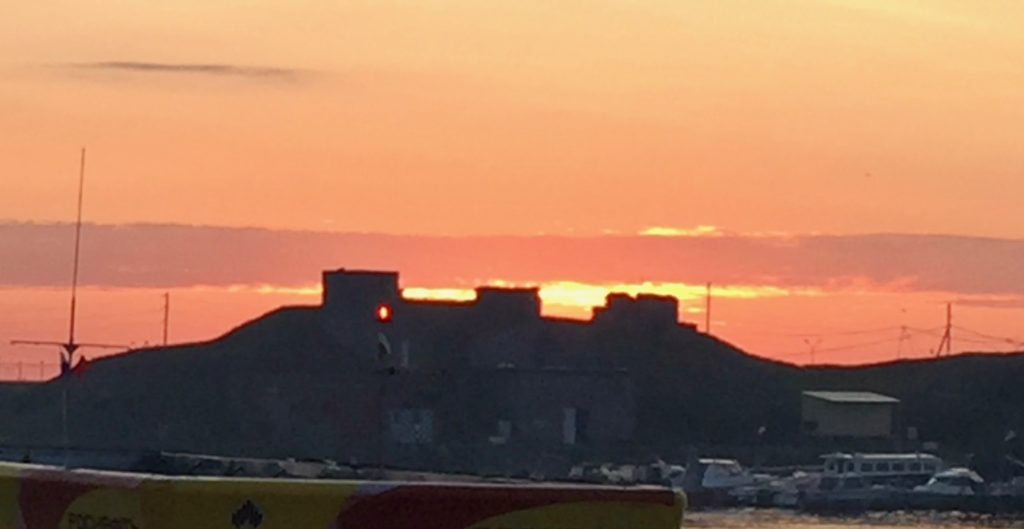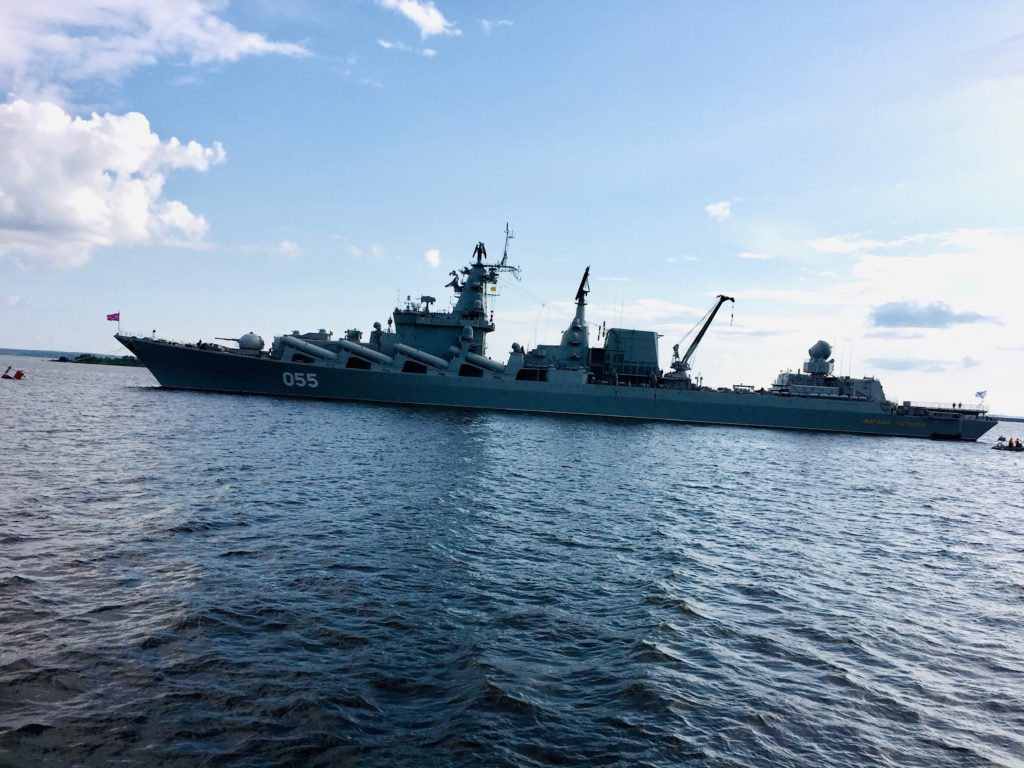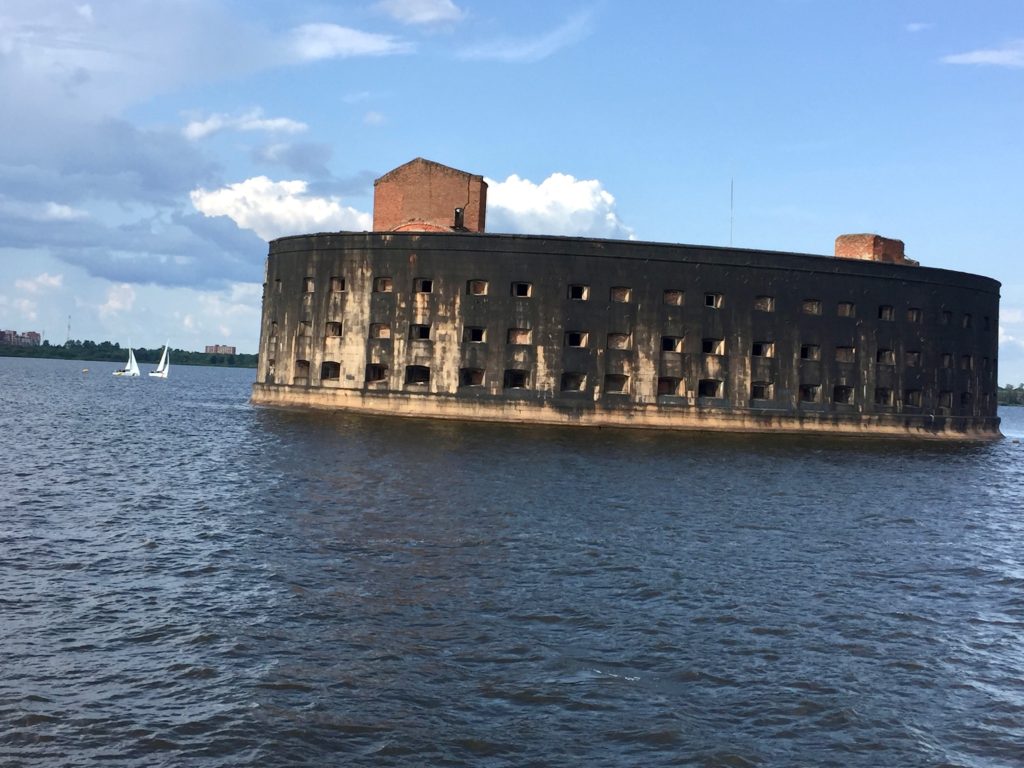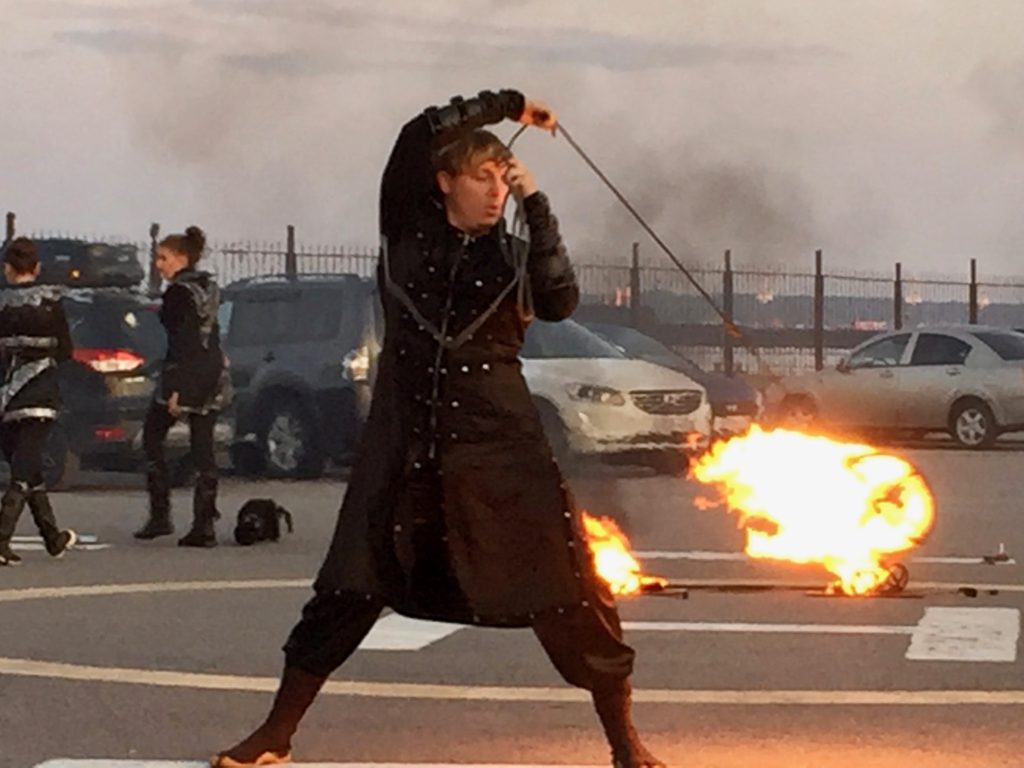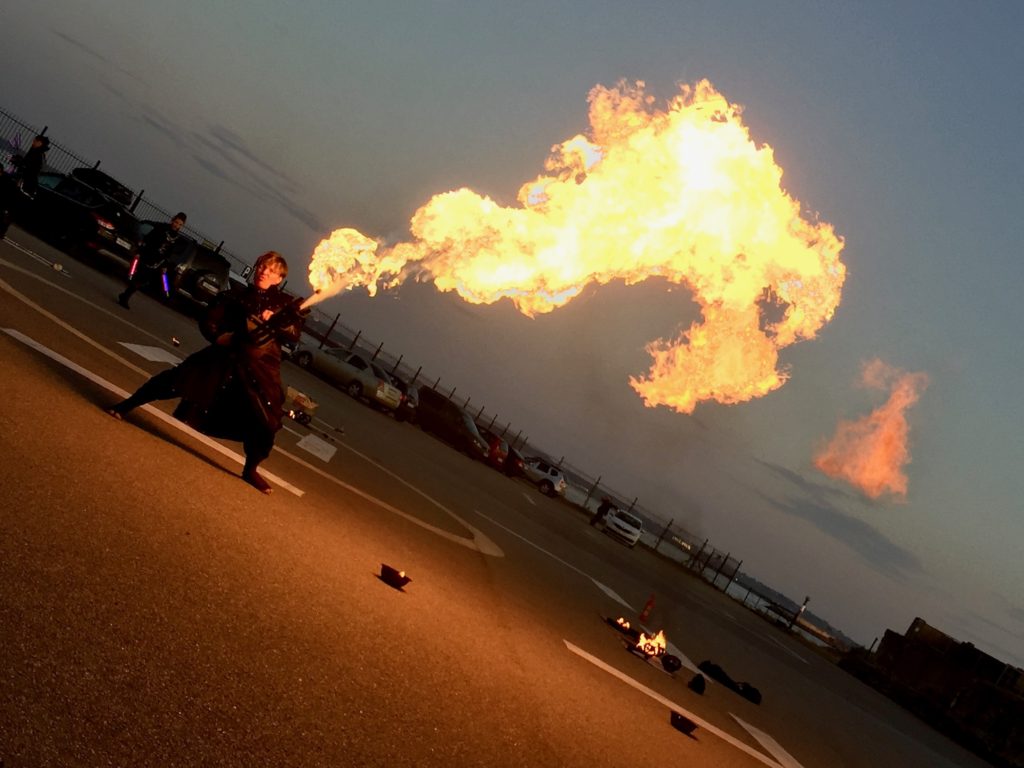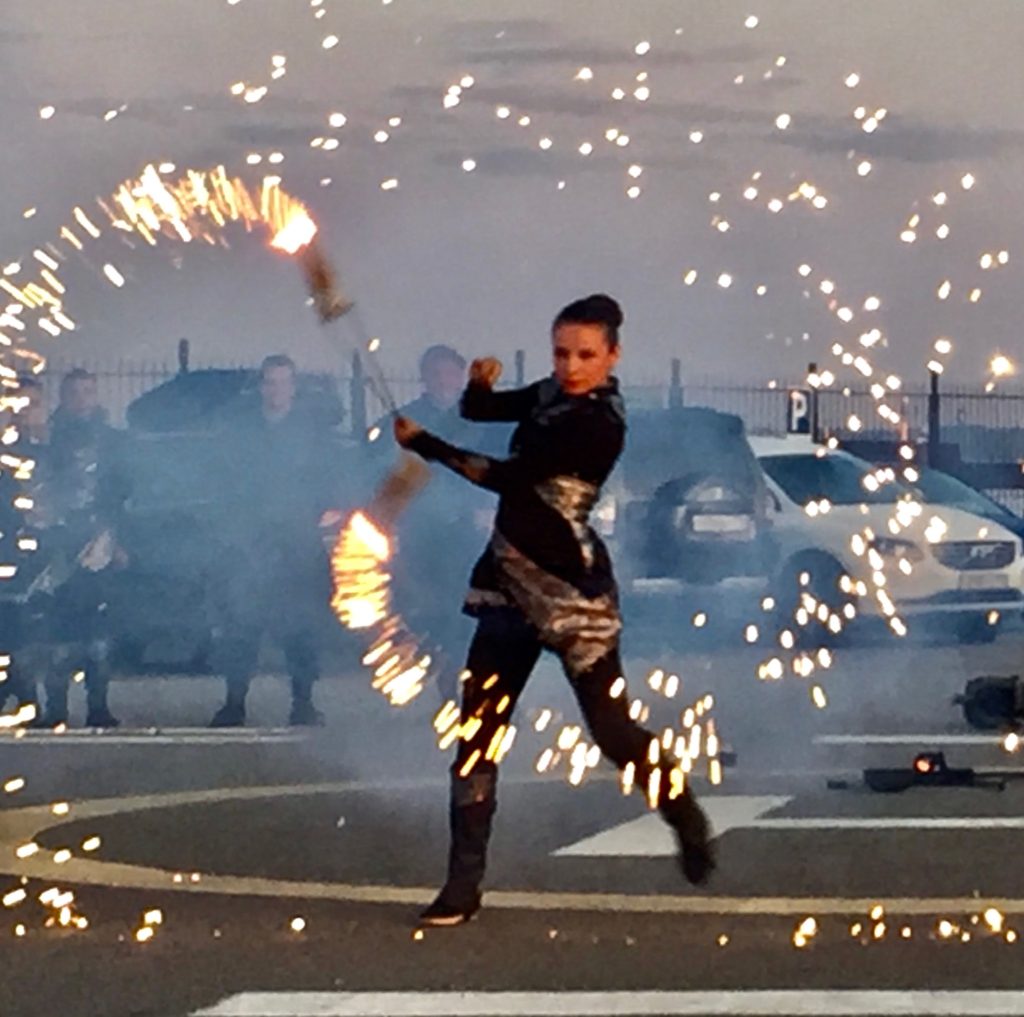Blog author Zephyr Carlyle visits Russia as Vladimir Lenin, complete with a shirt of the CCCP, (the abbreviations of the Communist Party of the Soviet Union.)
July, 2019 Comrades. — This post has two parts: Part One is background information on the glory of Russian cathedrals and palaces. Part Two is a celebration of all things Bolshevik.
Russian Proverb: It is Harder to Predict the Past Than the Future.
I arrived here in the Russian Motherland two weeks ago. The first few days were a big ball of travel confusion. However, with my usual luck of the stupid and travel moxie I could muster: so far, so good. Sorry, I should not exaggerate. The truth is: so far, FANTASTIC. Sometimes, you have very high expectations about something and later; that something turns out to be “pretty good.” You have no complaints, but you feel a little let-down because you really expected more. On this Russian odyssey, I had Great Expectations** and dreams. However, the reality of Russia for a tourist is so great, that it has left my loftiest expectations in a ditch somewhere back on the side of the Dream Highway along with my two failed marriages.
[** “Great Expectations.” A classic novel by Charles Dickens that I used to teach in high school when literature was actually on the curriculum, which ended about 2010.
In Russia, I am visiting many of the standard tourist attractions and sites, that are, by the way, chock-a-block filled with both Russian and foreign tourists. Here is my schedule: Another day, another mind-melt, gold-dripping Cathedral watching the local congregants. They are not only doing the Hail Mary, (four-way face cross); but bending over to touch the floor; and then bending down to kiss the floor; standing up to do another Hail Mary; bending over to touch….. — repeatedly. Note: Russian cathedrals have no pews or seats for parishioners. None. Oh, back to my schedule: Every other day, another palace that is so overwhelming in beauty that I come close to ecstatic rapture. At such times, I am ready to be beamed up. You have to see it in person, but we can try to give you the sense. Click to expand, and then try these on for size:
Plus, here is a bonus picture below: notice the perspective. This is a picture from the Hermitage Museum of Peter the Great’s throne. The throne is so far back in the recess that it looks the size of a baby high chair, or a baby car seat. If so, how big is the niche? How tall is the ceiling arch on this throne enclave? I took this picture at the rope line and tourists were not allowed any closer
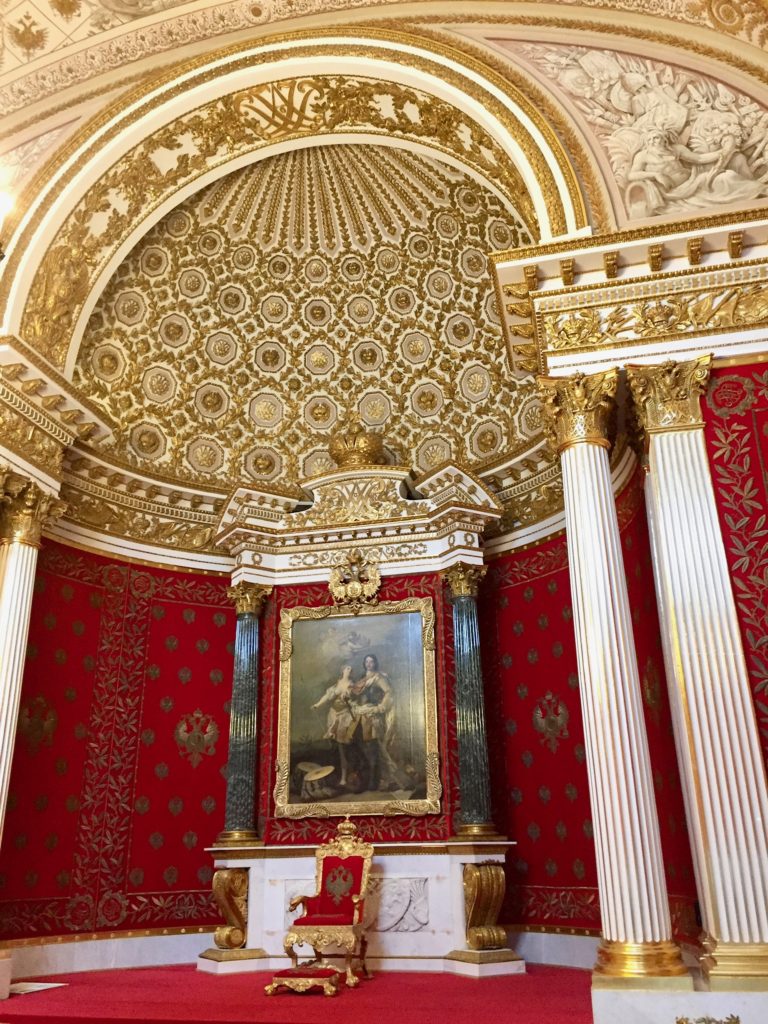
Sorry. I got carried away; but you will know what I mean if you see the Winter Palace in St. Petersburg and Palace of Catherine II (she was known as “Catherine the Great” for good reasons.) Catherine II ruled from 1762 to 1796 and built her Palace in the beautiful little town of Pushkin. The Palace was complete: It even had an Amber Room. This room is just like it is sounds — the walls and floor of this room are 100% constructed from amber. You would understand my near hysteria when I found out the true story of the Nazis invading northern Russia, including Pushkin. Besides slaughtering gobs of people, the Nazi armies ransacked and pillaged Catherine’s Palace. Prior the the invasion, the Russians meticulously, but hurriedly, got all the portable treasures out of the Palace. The Palace booty was successfully hidden in caves. Yet, the Russians could not dismantle the Amber Room – the room was abandoned to the Nazis. Before just torching Catherine’s Palace, the Nazis dragged away everything of value left behind. The Nazis squirreled it all away in hidden locations in the Fatherland — including the entire Amber Room, every amber flintlock. The other stolen Palace treasures have been found. However, to this day, the original Amber Room has never been located — an unsolved mystery from WWII.
After the Nazi defeat, the Soviet government dragged all their hidden Palace treasures out of the caves. The Soviets slowly started to rebuilt the Palace starting from the ground up — they had to go back to the original architectural plans; and build large parts from scratch. With the fall of the Soviets, reconstruction has picked up. Only a few years ago, the restored part of the Palace was re-opened to the public. Palace reconstruction continues to this day. Side note: I observed several major Russian monuments, cathedrals, palaces, etc. still be reconstructed from the terror and damage of the Nazi invasion. Many Americans have historic amnesia or ignorance: The Nazis invaded, captured, and burnt large parts of European Russia; including Russia’s second most important city, St. Petersburg. The Nazis also came way too close to capturing Moscow itself. I saw the remaining damage to Catherine’s Palace (photo display only— the damaged parts of the Palace are closed to the public) I cried and it was not the manly variety. Really, I was okay; but it was a close call.
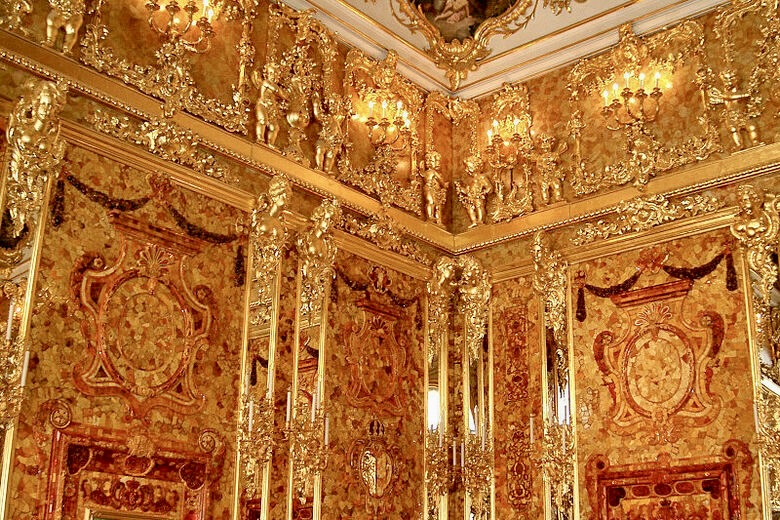
Of course, the excessive, rococo extravagance of the Czars is way over the top, but viewing their homes (to state the obvious: the palaces did not start out as museums; they were the Czars homes) is a spectacular experience up close and in person. See the photo below.

Never mind about that, Comrades. The focus of this email is to let you in on all the Bolshevik goodness (is that possibly the right word? Nyet) I have experienced and tried to relive.
[Note for the Glory of Gold readers: there is a bonus da Vinci painting at the end of this blog]
The Top Five Bolshevik Tourists Highlights in Russia
No. 1: Lenin’s Mausoleum. This one is a gimme. I have now seen Marx’s grave in Highgate Cemetery, London; and Trotsky’s last redoubt and grave in Mexico City. I can now die a happy Communist. Outside of Lenin’s tomb, and set against the Kremlin’s wall, is an emotionally moving display of the graves of the “heroes” of the Revolution with nearby sculptures celebrating the Revolution. Each one of these grave monuments has an inscription and the deceased’s bust sculpture (head and shoulders) on a pedestal to serve as a headstone. These famous Bolsheviks are all buried one next to the other. Stalin’s grave is right there in between Michael Suslov and Kalenin (if you know the Who’s Who of 1917 and beyond; you may know these names.) A fair number of tourists have their pictures taken by Stalin’s headstone sculpture. Yet, it also looks like people have taken a whack at Stalin’s inscriptions with metal mallets late at night. Stalin’s headstone has a lot of dings and scuff marks. If you ask, I will send other pictures of this interesting communist burial area, complete with a sculpture garden dedicated to those who suffered during the Revolution. I included a photo of Lenin’s tomb in a prior post, but publish it here again. Please expand this photo to get the full sense of the gravity of this bizarre monument where you get to view a pickled Lenin, the Bolshevik leader who died in 1924 (no photos of Lenin allowed.) Below are also some of the graves of fame or shame located right behind Lenin’s mausoleum:
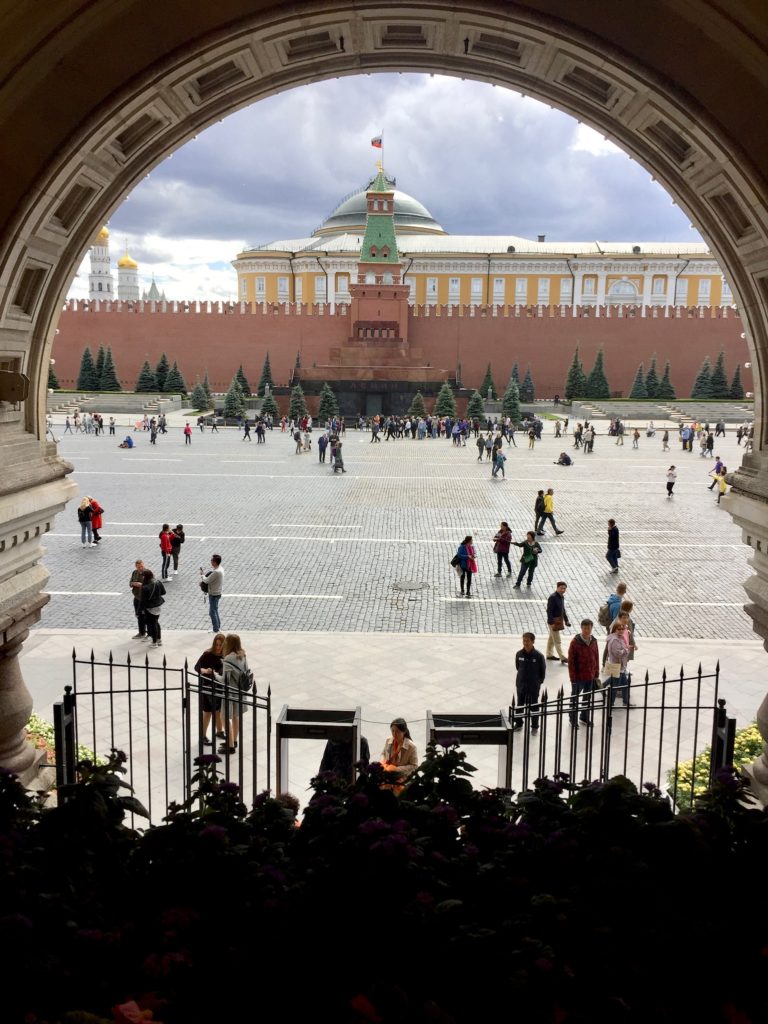
No. 2: The Prison Fortress of St. Peter and St. Paul. This hated prison and symbol of Czarist oppression held many commoners, as well as rich and famous. Naturally, the Bolsheviks, after seizing power, knew a good thing when they saw it. The Bolsheviks held many political enemies and common criminals in this prison fortress. Thus many, many inmates were sentenced to this prison during it’s 200 year history including, most fatefully, Alexander Ulyanov. Alexander was the older brother of the Bolshevik leader, Vladimir Lenin; Alexander Ulyanov was imprisoned for anti-Czarist agitation — actually, he was convicted of conspiracy to commit murder of a Czarist official. Alexander was later executed in this fortress jail for this crime. This jailing and execution of Alexander Ulyanov radicalized Alexander’s his little brother, Vladimir Ulyanov, who was an apolitical youth before this incident. Vladimir Ulyanov changed his name to Vladimir Lenin. The newly minted Lenin, with a newly minted hated for the Czar, carried the banner of the Russian version of Marxist battlecry: All Power to the Soviets! The rest of Vladimiar Lenin’s story is, well, history. I cried a few manly tears touring the cells, holding areas, and reading the stories of it’s residents.
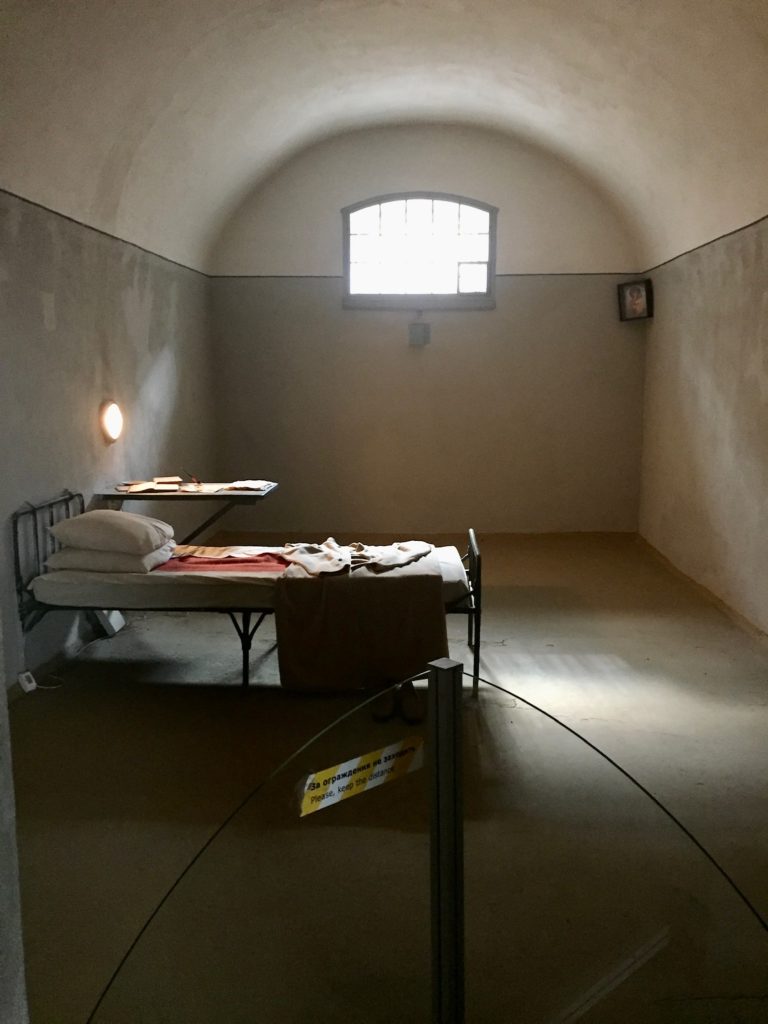
No. 3: The Cathedral of St. Peter and St. Paul. Right next to the prison, in the same fortress complex, is a drop-dead gorgeous Cathedral that is the tomb of most famous Czar since Peter the Great, along with other famous Czar era glitterati. The last Czar, Nicholas II, and his family were reburied in this Cathedral about fifteen years ago, in their own private side chapel. I shed some manly tears there too; not out of sorrow for that bastard Czar Nicholas II, but for his murdered family. Obviously, my sympathies are a little mushy here as I cried for both the prisoners in the prison fortress and their wardens in the Czarist regime. However, the Bolshevik assassins killed not only Czar Nicholas II and Czarina; but also: all six of their children, several servants, the family physician, and the family dog. The assassins really wanted this Czarist family dead. But the dog? The charred remains of the whole famn damily are now interred in one marble tomb. Inscriptions to each member is on the wall of this little side chapel. Visible on the back wall are the inscriptions for the Romanov daughters, Olga and Tatiana. To their left, is the more obscure inscription dedicated to the Czarina, Alexandra Feodorovna:
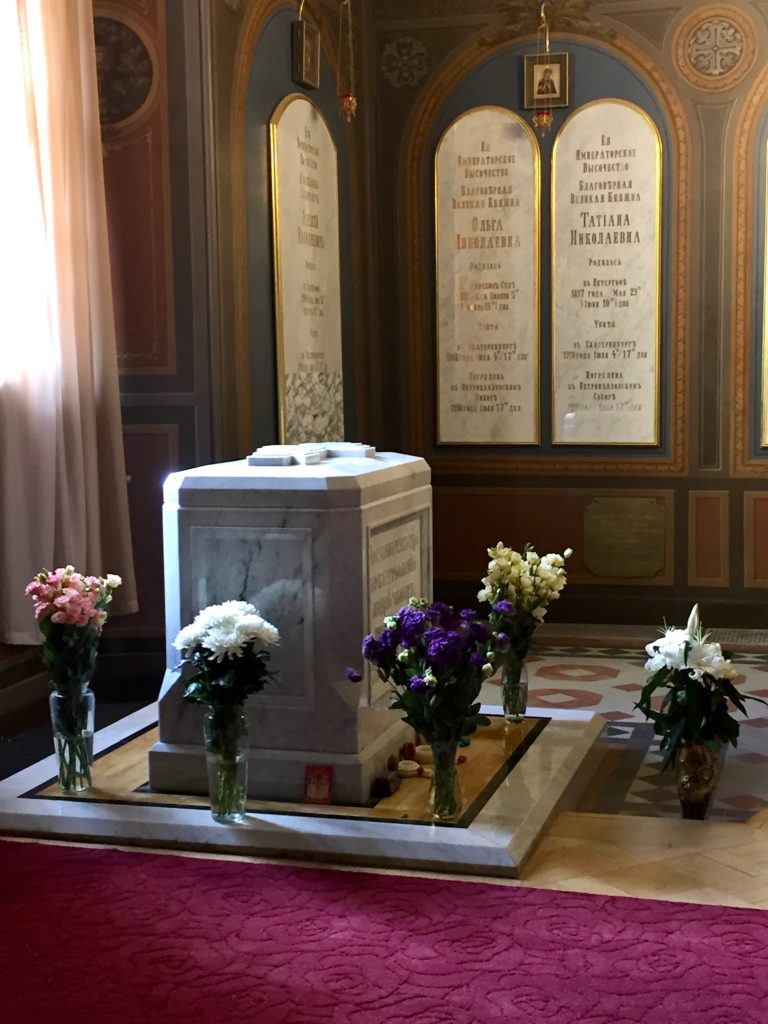
Post Script: It is myopic, and indeed false, evaluate the actions of Lenin and the Bolsheviks in a vacuum. A reader can condemn Lenin as evil incarnate, by looking exclusively at the Bolsheviks actions towards the Romanov (Czar) family, and towards the Kronstadt sailors as set out below. However, the Czarist regime was so cruel and indeed murderous to their own people that this puts a new spin on Bolshevik atrocities. Then, add into any evaluation, the blood massacres of civilians from the invading White Army; plus atrocities on both sides from Polish, Cossack, and Anarchist uprisings. In short, you have a swirling bloody mess of crimes against humanity; and only the most ruthless, heartless, decisive leader could come out on top. Thus, was Lenin the blood-thirsty murderous dictator portrayed in U.S. history books? Or was he just the most determined, ruthless, misguided but murderous, bastard determined to create worker “paradise?” Let me put it to you this way: I would not cut Lenin off in traffic; always give him correct change.
Lenin remained fatally vengeful towards the remaining Romanovs, even after the execution of Czar Nicholas II and family. He ordered the death of all Romanovs within his grasp, anywhere they were found on Russian soil:
“The last group execution of Romanovs took place in 1919, in Peter and Paul Fortress in Petrograd, where, after months of imprisonment, the czar’s cousins Nicholas, Dmitri and George, and his uncle Paul were lined up at the edge of a mass grave. Scores of foreign and Russian dignitaries had pleaded with the Bolshevik government for their release. Rejecting one such petition, submitted by the writer Maxim Gorky on behalf of Grand Duke Nicholas Mikhailovich, the chairman of the Imperial Russian Historical Society, Vladimir Lenin said, “The revolution does not need historians.” [Note: before his rise to power, Lenin was the most powerful social thinker and historian in Russian.]
No 4: Battleship Aurora. The famous battleship where, at a pivotal moment, the sailors turned revolutionaries on a fateful night. The battleship suddenly turned it’s gun on the Czar’s army during the Bolshevik uprising of November 7, 1917. The military heft and moral upliftment from the blazing cannons of the Aurora shelling the Army bastion — plainly visible to the city of St Petersburg — provided the pivotal support that brought victory to the Bolsheviks.

No. 5: Kronstadt. In 1921, Kronstadt was a naval station located in the Baltic Sea not far from St. Petersburg. Historically, Kronstadt consists of a series of eight fortress and fortifications built over centuries. Each major fort is designed to face and defend from the different historic enemies of Russian in the arc of time (Sweden, Poland-Lithuanian Union, Turkey, England, etc.) – a kind of shifting military defense build-up strategy. Currently, Kronstadt is used a a major navel station as evidenced by the two photos below of navy ships docked at the Kronstadt port
However, the signal Bolshevik event from 1922 occurred when the Red Army under Trotsky crushed an uprising of sailors at Kronstadt. To sum up the crisis: the Kronstadt sailors demanded only that the Bolsheviks fulfill their rhetoric of “all power to the Soviets [people].” The members of the fleet wanted to implement Lenin’s promise of local autonomy by the people to make decisions as good Communists. Oh no, this uprising which started out with the sailors saying: “Good work Comrade Lenin and the Russian people, we are all Communists now. What about that power now to the Soviets [Worker’s Councils]? We bled and died to defeat the White Russian counter revolutionaries in the bloody civil war of 1919- 1921. The local Soviets will now lead the way to a Communist Russia.”
Lenin’s answer: “Nyet!” (No!) In response, the Kronstadt sailors mutinied and dug in literally and figuratively. Once the Kronstadt sailors were secure in underground bunkers, their demands, which garnered a lot of support nationwide, became a grave challenge for Lenin: The sailors demanded that Lenin allow for the flowering of Communism on a local level. In response, Lenin sent in Trotsky and the Red Army and Red Navy Bolshevik loyalists — all of them together at the same time. The Kronstadt redoubt was overwhelmed by superior Bolshevik forces. After a valiant battle, the Kronstadt mutineers were all pulverized, crushed, eviscerated; and then killed — it was blood, and frankly torture, on the Baltic ice.
From that time forward, “Democratic Centralism” became the guiding principal established for all political, economic and social decisions. Democratic centralism is where democracy starts and stops with the intrigue and backstabbing at the Politburo (the President and a few key leaders). Central rulings (called ukase in Czarist times, and the concept continued during the Bolshevik reign) emerged from the Politburo and its Central Committee and were followed as the law of the land. This was the USSR version of democracy in action. All decisions, including predetermined election results, came from the top (Politburo) and went down the rigid chain and command. Everyone obeyed, or pretended to obey, central government directives.
Comrades, the important Kronstadt lesson for us: Arguably, that moment in history — the brutal crushing of the Kronstadt uprising — foretold the failure of the Communist experiment in Russia. And it was not pretty.
The naval station and port of Kronstadt today is full of energy and surprise. Here below are the late afternoon entertainers. These folks showed up, did their energy light show, packed up, and left. They did not talk to anyone nor pass around a hat. Once again, I had no idea. Enjoy.
До свида́ния! [da-svee-da-née-ya] Goodbye!
Bonus: Under the drooling beauty section, I forgot to add this little, late 15th-century da Vinci painting, the Madonna Litta. This Madonna is at the Hermitage Museum (Winter Palace) in St Petersburg. A companion painting, right next to the Madonna Litta, which would be a second Madonna painting by da Vinci, had been taken down, for reasons unknown to me.
